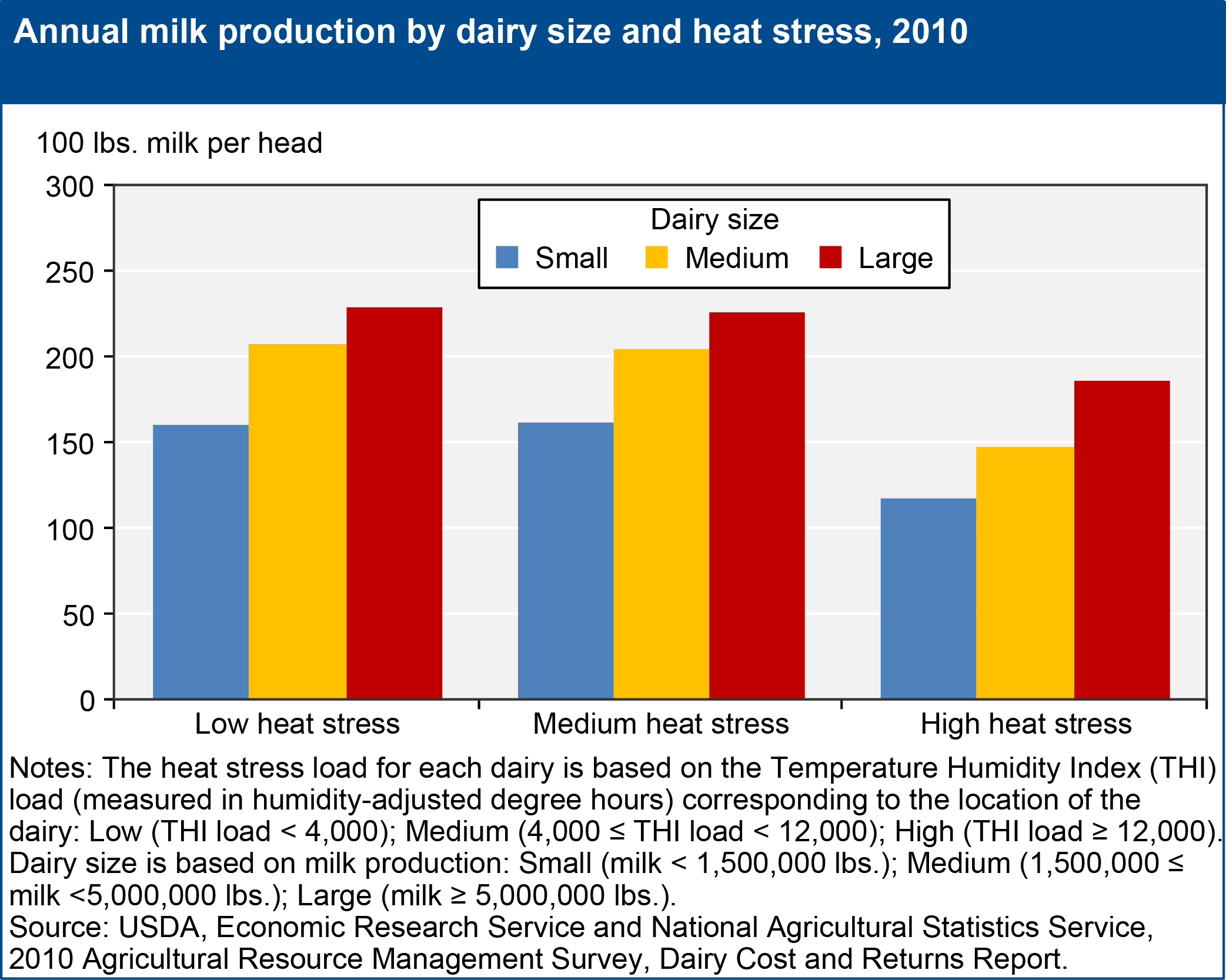Per-cow milk production is lower in hot climates
- by Nigel Key
- 11/20/2014

Above a temperature threshold, an animal may experience heat stress, which results in changes in its respiration, blood chemistry, hormones, metabolism, and feed intake. Depending on the species, high temperatures can reduce meat and milk production and lower animal reproduction rates. Dairy cattle are particularly sensitive to heat stress; experiments have shown that high temperatures lower milk output and reduce the percentages of fat, solids, lactose, and protein in milk. A 2010 USDA survey of dairy farmers shows how climate influences milk production in practice. For small, medium and large dairies, milk output per cow was lower in areas with high heat stress compared to areas with low or medium heat stress. In much of the United States, climate change is likely to result in higher average temperatures, hotter daily maximum temperatures, and more frequent heat waves. Such changes could increase heat stress and lower milk production, unless new technologies are developed and adopted that counteract the effects of a warner climate. This chart is based on data found in the ERS report, Climate Change, Heat Stress, and Dairy Production, ERR-175, September 2014.

